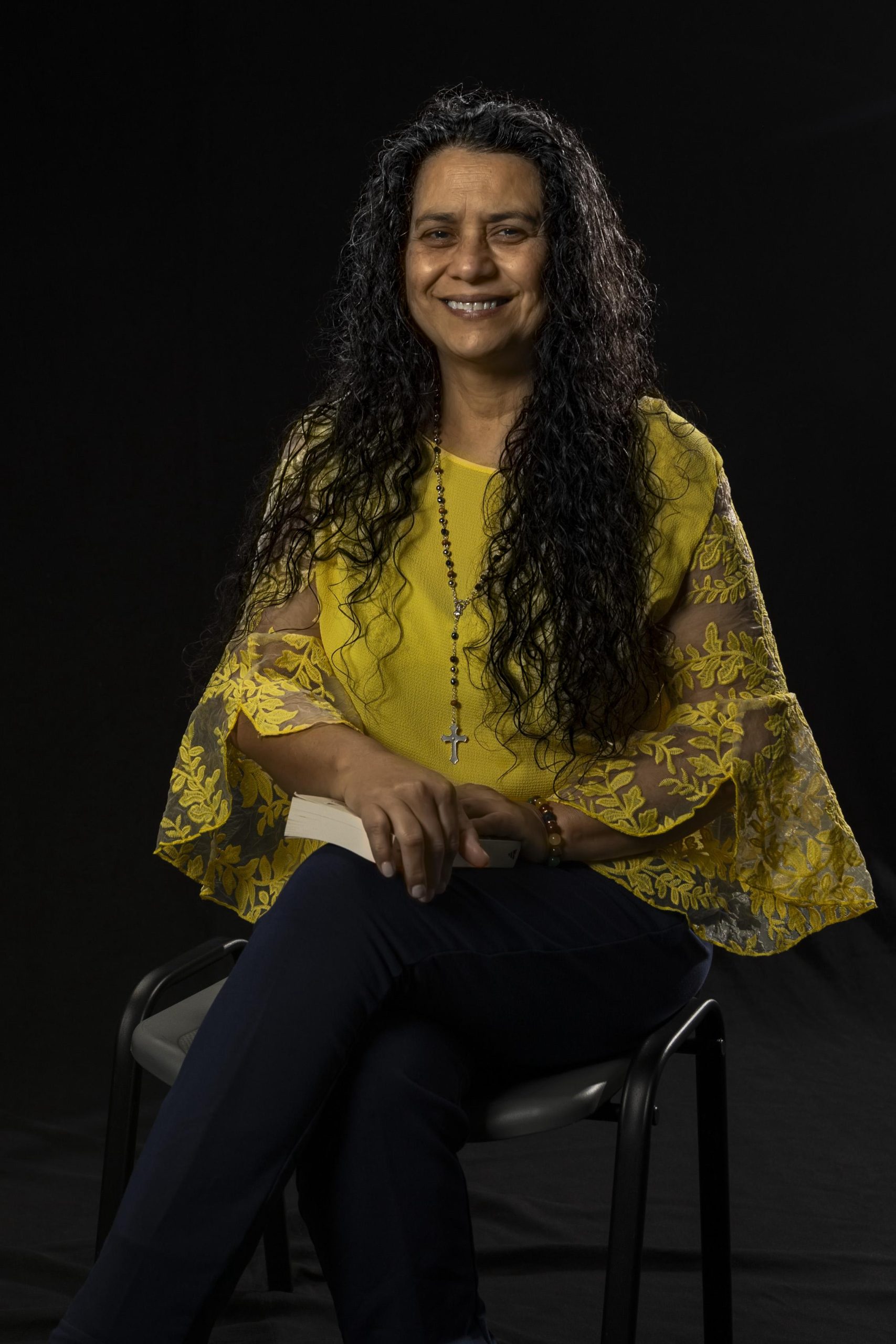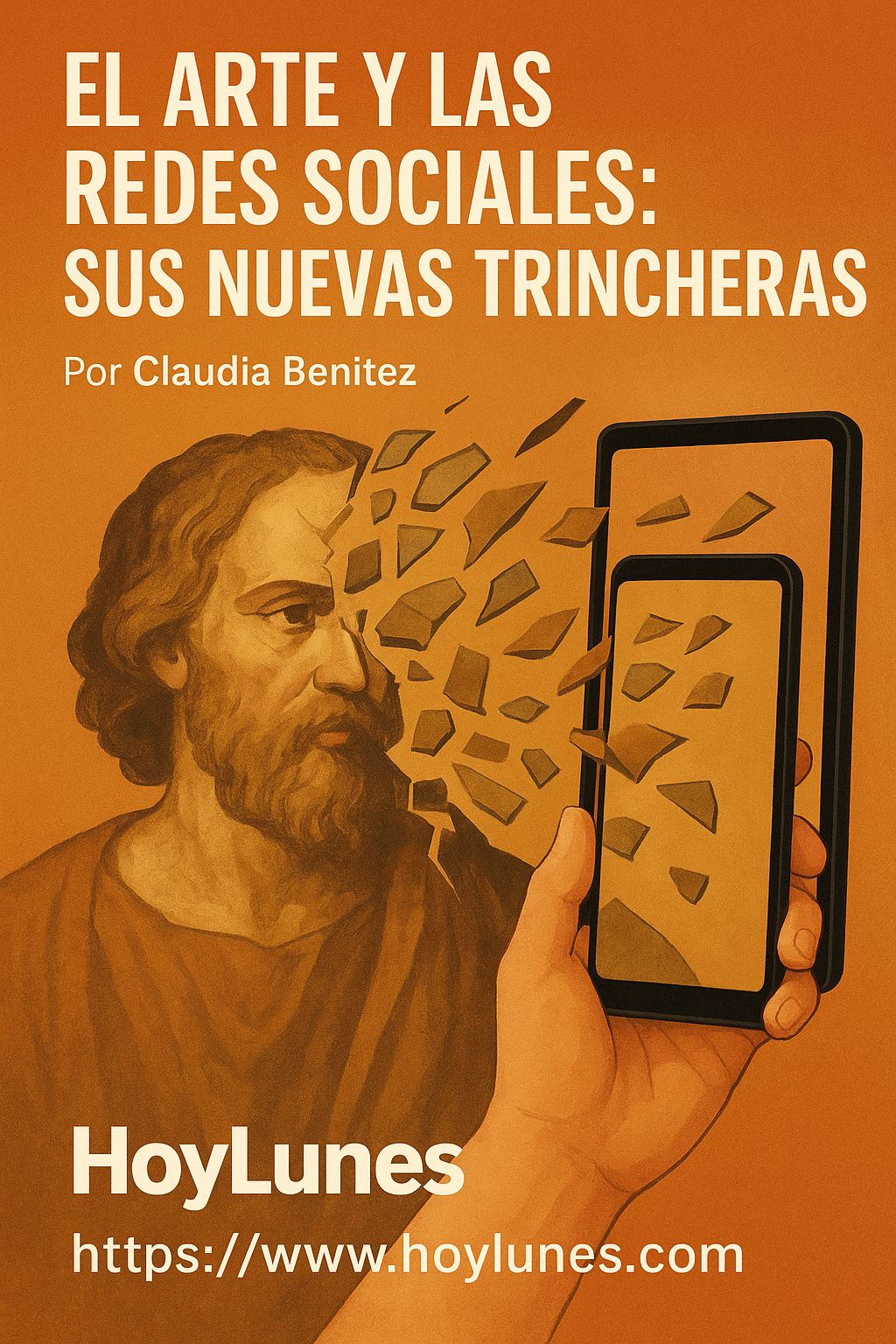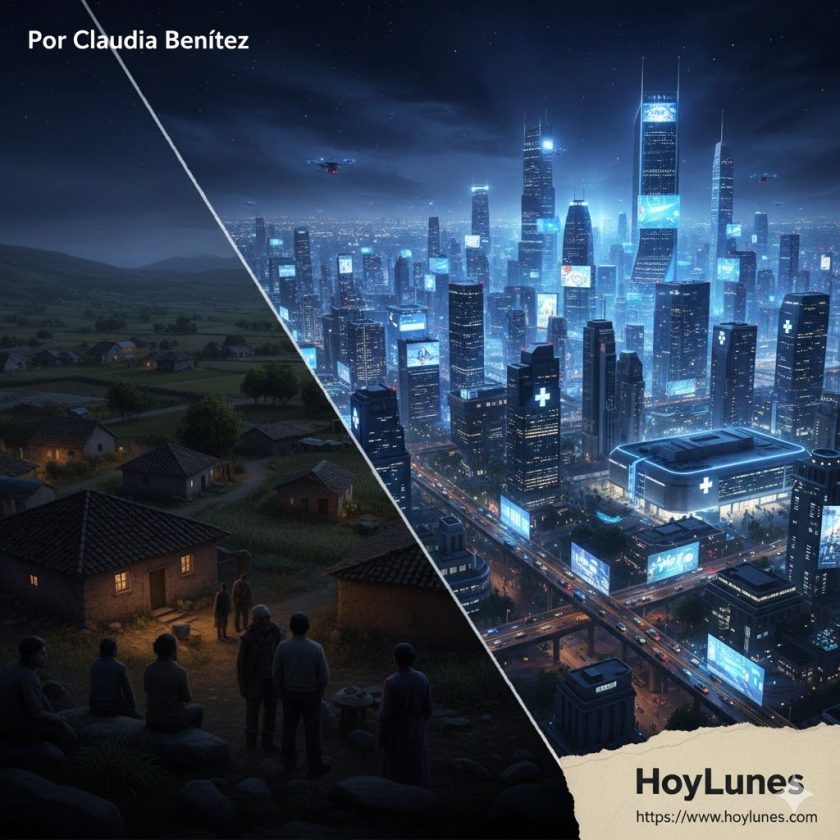When art leaves the museum to inhabit digital immediacy, becoming mirror, protest, and collective memory.
By Claudia Benitez
HoyLunes – It is nothing new for us to witness how art has found in the digital realm and social media a fertile ground to expand its language, break boundaries, and reinvent the relationship between creator and spectator.
The rise of platforms such as Instagram, TikTok, or YouTube—among so many others—has turned the artist into a traveler of immediacy, capable of projecting their voice and being heard across the world in a single flash. The artwork no longer waits in the silence of a museum: it now unfolds, fragments, and multiplies across screens and devices, like an echo seeking to resonate in thousands of gazes.
This phenomenon opens new territories: video art flowing like a digital river, performances beating in live streams, illustrations sprouting on the luminous skin of a screen, interactive interventions inviting the spectator to become part of the creative gesture. Art becomes protest, wound, and also voice; it turns into a mirror reflecting the violences of our time.

Digital art, with its very matter made of speed and light, plays with immediacy and virality. An illustration shouting against gender violence, an animation questioning war, a live performance exposing repression: all of them can unfold like lightning, embracing thousands of people within minutes. Their strength does not lie solely in the symbol, but in repetition, in reproduction, in sharing, in the possibility of becoming emblem, banner, collective memory.
The transcendence of the work thus ceases to be silent contemplation to transform into public conversation, into a spark igniting debates, confirmed as a seed of awareness.
Social media, like open squares, allow the voice of an emerging creator to resonate alongside institutional campaigns or anonymous expressions. In that irreverent blend, the border between authorship and community, between opinion and concept, between art and advertising, becomes blurred. What emerges is a choral constellation, a shared territory where art is accessible to all.
In the face of violence—physical, psychological, structural, or symbolic—digital art unfolds on universal scales, with sensitive and luminous languages capable of touching deep fibers and crossing invisible borders. Its forms speak with the swiftness of the instant, addressing diverse audiences in the common language of emotion, shared and generally fleeting, given the incessant flow of new information.

Yet this visibility is a double-edged sword: the abundance of images risks turning pain into fleeting merchandise, transforming protest into a passing cry, converting certainty into deception—all marked by the seal of the imminent and the decadent. For this reason, the true challenge of digital art lies not only in immediate impact, but in its ability to sustain narratives that sow memory, cultivate reflection, and awaken a sensitive ethic toward reality. The artwork must aspire to more than a fleeting spark; it must beat as a trace, open cracks in indifference, and, if possible, ignite the spark of collective action.
Thus, digital art and social media stand as the trenches of the present: territories of resistance where aesthetics embrace politics, and where imagination rises as a luminous weapon against oblivion and indifference.

#hoylunes, #claudia_benitez,



